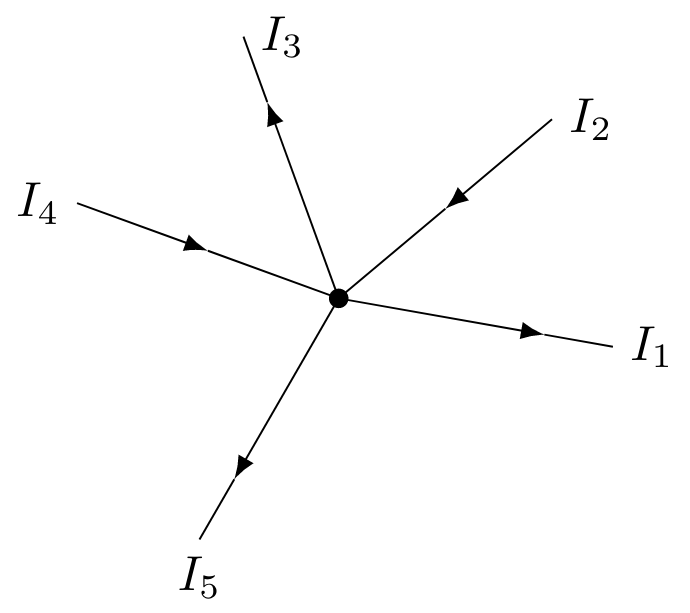Kirchhoff's Circuit Laws
Table of Contents
Nodal Rule
Nodal Rule
For reasons of convention, incoming currents are given a positive value and outgoing currents are given a negative sign. As an example, we take a look at 5 currents as shown in the figure below.
Here, $I_2$ and $I_4$ are outgoing currents, whereas $I_1$, $I_3$ and $I_5$ flow into the node. Using the nodal rule, we obtain:
$$-I_1 + I_2 - I_3 + I_4 - I_5 = 0$$
Of course, all signs can also be reversed without changing the value of the sum.
The sum of all ongoing and outcoming currents at one node in an electrical circuit has to vanish: $${\sum_{k=1}^{n} I_k = 0}$$
Mesh Rule
Mesh Rule
The signs result from the direction of flow of the current, analogous to the node rule. The direction of rotation can be chosen arbitrarily, but the signs must be adjusted accordingly if the direction is reversed. As an example, we take a look at a circuit with 5 meshes as shown in the following figure.
Since the current in this mesh flows in the same direction everywhere, the sum of the partial voltages is:
$$U_1 + U_2 + U_3 + U_4 + U_5 = 0$$
However, when the voltage is used, care must always be taken to select the correct sign. If there is a voltage source in the mesh, either the source voltage or the individual voltages must be given a minus sign.The sum of all voltages within one mesh has to vanish: $${\sum_{k=1}^n U_k = 0}$$
This page contains 513 words and 2910 characters.
Last modified: 2022-10-02 19:48:38 by mustafa




